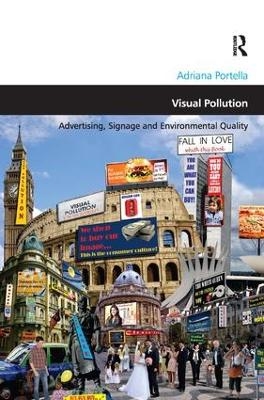
Visual Pollution
Routledge (Verlag)
978-0-7546-7534-1 (ISBN)
In recent years, there has been considerable interest in the problems that public spaces face because of the design of commercial signs. The negative consequences that commercial signs can have on the visual quality of urban areas and further more, on people's quality of life, has been studied from both architectural, planning and psychological perspectives. While the issue of visual pollution, as this phenomenon is commonly described, has been widely debated, there is as yet no clear conclusion as to how best to control commercial signage and whether different urban contexts and people from different backgrounds and cultures have universal or distinct preferences. Several different commenrcial signage approaches are currently applied to different historic cities, but these initiatives are not based on principles derived from the perception and evaluation of users. Drawing on a range of comparative and contrasting empirical studies of historic city centres in the UK and Brazil, this book examines questions of commercial signage control management, the preservation of historic heritage and user preference and satisfaction. The author takes an environment behaviour approach to this research, involving theories, concepts and methodologies related to environmental psychology, architecture, planning and urban design. In doing so, it argues that there are in fact visual preferences common to the majority of people, independent of their urban context and that these common views can be useful to the development of a general theory of how to control commercial signage. In conclusion, the book suggests that the best way of controlling signage is not only to recommend general guidelines related to the operation of commercial signage, but also to recommend design principles that can create commercial streetscapes evaluated positively by different users.
Adriana Portella is based at the University College London in The Bartlett School of Planning, UK.
Contents: Preface; Introduction: synopsis of each chapter and glossary of concepts. Part I The Theoretical Debate: Visual Quality of Public Spaces Versus Commercial Signage: User’s perception and cognition of the built environment; Consumer culture, marketing the city and urban tourism; Reviewing commercial signage controls in different countries. Part II The Empirical Investigation: The Effects of Commercial Signage on People’s Quality of Life: Empirical investigation - England and Brazil; People’s quality of life and commercial signage control management; User’s preference and satisfaction with historic streetscapes; Commercial signage and building design: positive and negative factors. Conclusion: what is needed to enhance visual quality in historic and commercial city centres?; Appendices; References; Index.
| Erscheint lt. Verlag | 21.4.2014 |
|---|---|
| Verlagsort | London |
| Sprache | englisch |
| Maße | 156 x 234 mm |
| Gewicht | 771 g |
| Themenwelt | Naturwissenschaften ► Biologie ► Ökologie / Naturschutz |
| Naturwissenschaften ► Geowissenschaften ► Geografie / Kartografie | |
| Sozialwissenschaften ► Soziologie | |
| Technik ► Architektur | |
| ISBN-10 | 0-7546-7534-3 / 0754675343 |
| ISBN-13 | 978-0-7546-7534-1 / 9780754675341 |
| Zustand | Neuware |
| Haben Sie eine Frage zum Produkt? |
aus dem Bereich


